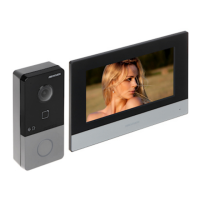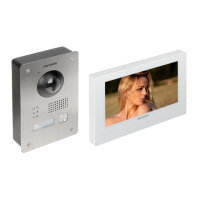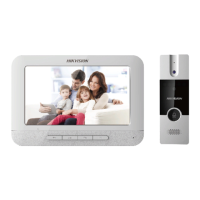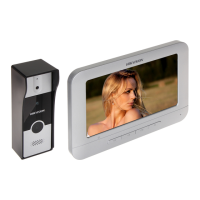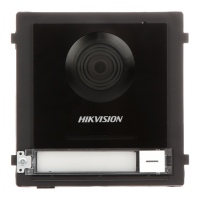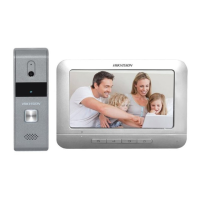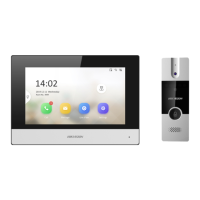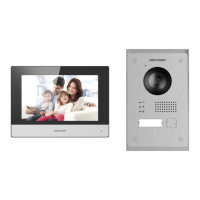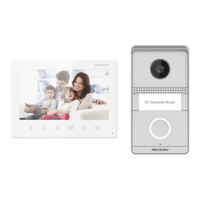Do you have a question about the HIKVISION DS-KIS603-P and is the answer not in the manual?
| Model | DS-KIS603-P |
|---|---|
| Category | Intercom System |
| Resolution | 1024 x 600 |
| Camera | 2 MP HD Camera |
| Audio Input | Built-in Omnidirectional Microphone |
| Audio Output | Built-in Loudspeaker |
| Operating Temperature | -10°C to 55°C (14°F to 131°F) |
| Supported Protocols | TCP/IP, SIP, RTSP |
| Display | 7-inch TFT LCD |
| Network Protocol | TCP/IP |
| Power Supply | 12 VDC |
| Installation | Surface Mount |
| IR Supplement | IR Supplement |
| Protection Level | IP65 |
| Power Consumption | <10 W |
| Humidity | 10% - 90% (non-condensing) |
| Communication Interface | Ethernet |
Provides instructions for using and managing the product, including descriptions, charts, and images.
Lists Hikvision's trademarks and logos, and those of other companies.
Outlines limitations of liability, warranties, and user responsibilities regarding product use and applicable laws.
Indicates a hazardous situation that could result in death or serious injury if not avoided.
Indicates a potentially hazardous situation that could result in equipment damage or data loss if not avoided.
Provides additional information to emphasize or supplement important points in the main text.
Details critical safety information, including operating temperature, electrical compliance, power supply, and wiring.
Lists precautions related to physical shock, environment, heat, light exposure, handling, cleaning, and battery replacement.
Explains FCC compliance rules for digital devices and measures to avoid harmful interference.
Details CE marking, compliance with EU directives (EMC, RoHS, WEEE), and battery disposal.
Describes the components and labels of the front and rear panels of the door station.
Identifies and describes the components on the bottom panel, including TF card slot and network interface.
Details the function of each terminal connection on the device.
Provides wiring instructions for connecting door locks, including magnetic and electric strike types.
Illustrates the wiring diagram for connecting a door contact sensor.
Shows the wiring diagram for connecting an exit button.
Details the wiring configuration for connecting an alarm input device.
Introduces accessories and provides dimensions for the mounting plate.
Guides on preparing tools and steps for surface mounting the device, with and without a protective shield.
Guides users on activating the door station via web browser or client software, including password creation.
Describes how to configure network settings like IP address and gateway via client software.
Explains accessing live view and managing user information for the door station.
Covers configuring device management, number settings, and an overview of parameter settings.
Explains configuration of live view, record files, captured pictures, and their saving paths.
Guides on configuring basic information, time settings, DST, and maintenance options.
Covers authentication, security services, and user permission management for enhanced security.
Details TCP/IP settings including IP address, subnet mask, gateway, and DNS server configuration.
Explains configuring device ports and Wi-Fi connections.
Details configuration for SIP settings and FTP file transfer.
Describes how to manage devices via platform access, including stream encryption.
Introduces configuration for video, audio, and image parameters.
Covers event settings like motion detection and schedule configuration.
Details intercom functionality, device IDs, and access control features.
Covers device activation, adding, editing, and deleting devices using the client software.
Guides on adding devices online, by IP address, or by IP segment.
Describes accessing live view and managing organizational structures within the client software.
Details managing person information, including adding, importing, exporting, and issuing cards.
Introduces managing video intercom calls, notices, and searching intercom information.
Provides a QR code to access the device communication matrix.
Provides a QR code to access common serial port commands for devices.
